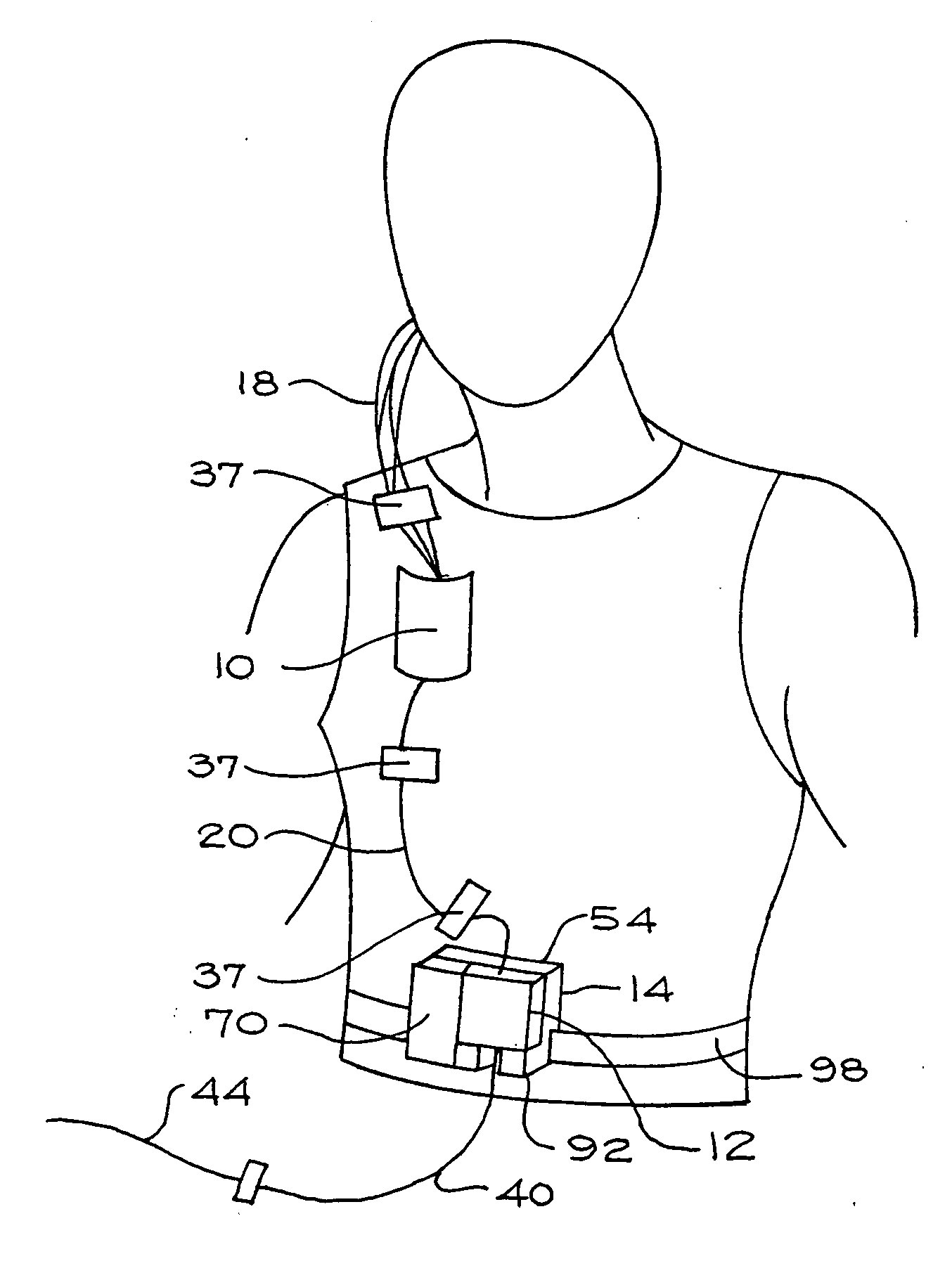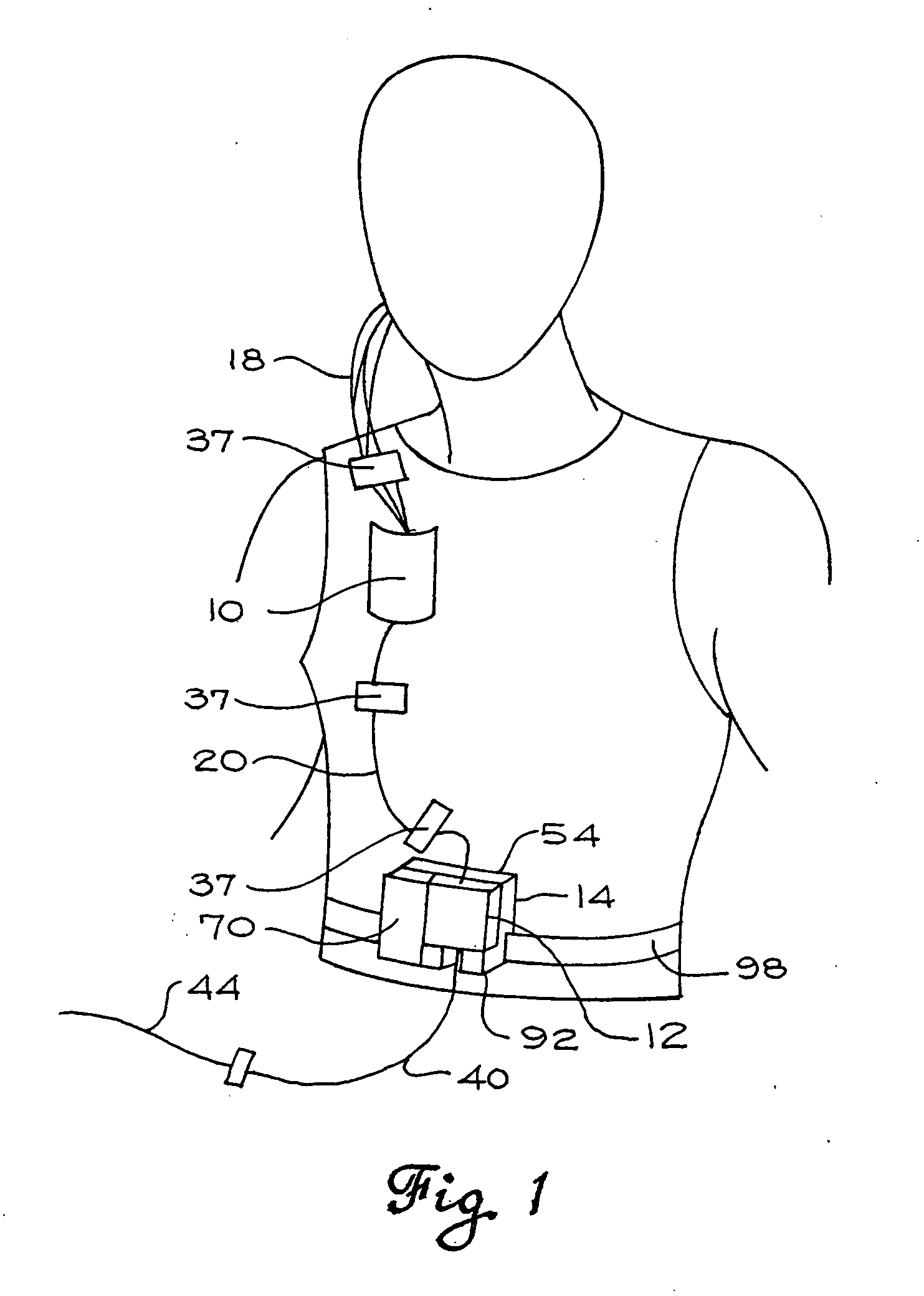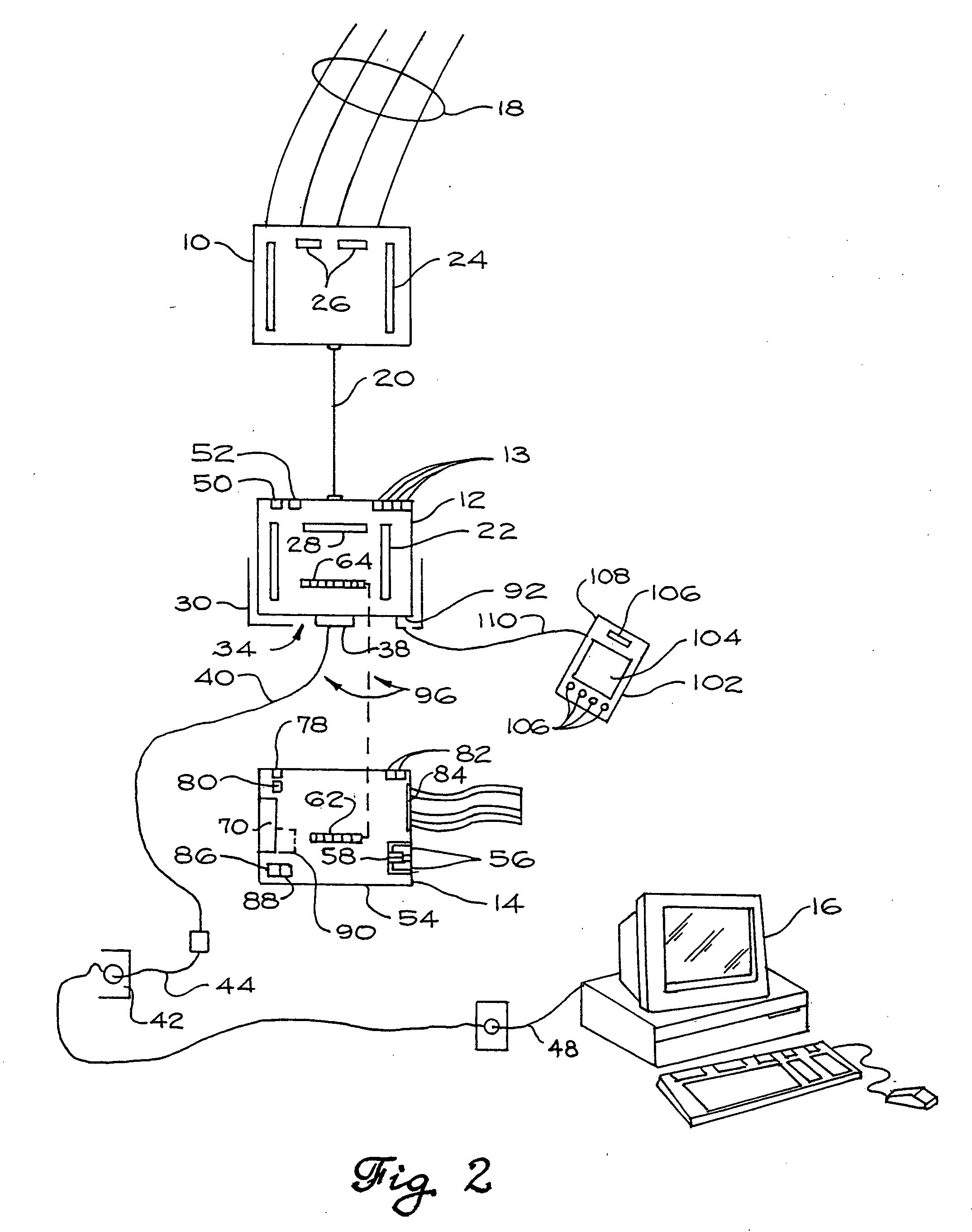Physiological signal monitoring apparatus and method
a signal monitoring and signal technology, applied in the field of physiological monitoring and control, can solve the problems of more noise and interference in the detected signal, different noise and interference problems for each type of electrode, and noise and interference problems, so as to reduce the number of cables, increase patient comfort, and facilitate wear.
- Summary
- Abstract
- Description
- Claims
- Application Information
AI Technical Summary
Benefits of technology
Problems solved by technology
Method used
Image
Examples
Embodiment Construction
[0050] With reference to FIGS. 1 and 2, a preferred embodiment of the present invention employs a jackbox 10, an amplifier 12, and a portable operations device (POD) 14 in communication with a host computer 16. The jackbox 10, amplifier 12, and portable operations device 14 can preferably be worn by or otherwise carried upon a patient. The jackbox 10 can be of any conventional type, and has a plurality of electrode connectors (not shown) for connection to a plurality of conventional electrodes 18. The electrodes 18 can be surface, subdermal, depth, or other types of electrodes, and can be arranged on the patient in any manner desired, such as in particular locations on the patient's head, in a grid or array, and the like. If desired, a combination of different electrode types and manners of connection to the patient can be employed.
[0051] The host computer 16 can be any type of computer device or system capable of processing patient physiological signals and data, including in some...
PUM
 Login to View More
Login to View More Abstract
Description
Claims
Application Information
 Login to View More
Login to View More - R&D
- Intellectual Property
- Life Sciences
- Materials
- Tech Scout
- Unparalleled Data Quality
- Higher Quality Content
- 60% Fewer Hallucinations
Browse by: Latest US Patents, China's latest patents, Technical Efficacy Thesaurus, Application Domain, Technology Topic, Popular Technical Reports.
© 2025 PatSnap. All rights reserved.Legal|Privacy policy|Modern Slavery Act Transparency Statement|Sitemap|About US| Contact US: help@patsnap.com



